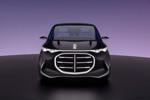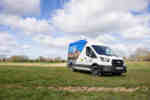Then of course on top of that there will be specification changes, new engines and facelifts. All this will put pressure on used values and as manufacturers and dealers gear up to offer all these new models they have to be extremely careful not to upset the used market.
There are very few cars being introduced that are more expensive than the outgoing model and the spec tends to be better, so offering an all round improved package. So why buy a nearly new car? No reason – unless it is cheap, and that is exactly what new models do, make the old ones look great value. But at the same time they make the old ones look suddenly dated.
Take some cars that have been launched in the past 12 months and see how the old ones have aged overnight. The Peugeot 307, the Renault Laguna and Citroen's C5 make their predecessors look antique. The new A4 is substantially different to the old A4 and the Jeep Cherokee has been transformed from what was a very old looking 4x4 to being very modern and more acceptable.
From Ford the old Mondeo was looking dated but the new one was like a breath of fresh air and that freshness continues even now it has been out for 15 months. So looking forward to this year, keeping up with new models will be a never-ending task.
A couple of weeks ago I did a paragraph on how the Mitsubishi Starion allegedly got its name and how there had been a mix-up between the Americans and Japanese.
Since then I have been informed on good authority that it's name came from the sky. The range of engines at the time were Saturn engines and Mitsubishi wanted to keep the heavenly theme, so they thought that 'Star' and 'Orion' would make a great name for a car. However if you are ever on Who wants to be a Millionaire and the question comes up don't phone me, because I still prefer the old story.
During the recent cold spell when temperatures never really got much above freezing, I am sure that just about every one of us at some stage were frustrated at the lack of working capability of our windscreen washers.
Manufacturers tell us when they are launching a new car about how they took test vehicles to the North Pole to check engine starting at –40 degrees, then off to the Sahara for hot testing at temperatures up to +40 degrees. Then they have machines for opening and closing doors a million times to ensure that nothing breaks.
But do they do tests on the M1 or M62 on a freezing cold day in January, with filthy roads and water that refuses to come out and hit the windscreen? No they don't!
Just at the time when a reliable washer system is needed it doesn't work. With all the modern technology on board cars today you would think that a heated washer system, from bottle to nozzle, would be standard. But it is only on a handful of cars.
The only option is to load the bottle with almost neat washer fluid but the smell makes your eyes run and at £1 per litre this is too expensive. The only other reliable way of cleaning the windscreen is to do what my dad used to with his very first car, an Austin A30. He took a washing up bottle with him, put down the window and squirted it onto the windscreen manually.
You may now have satellite navigation, but if you can't see where you are going, it is pretty useless.
















Login to comment
Comments
No comments have been made yet.